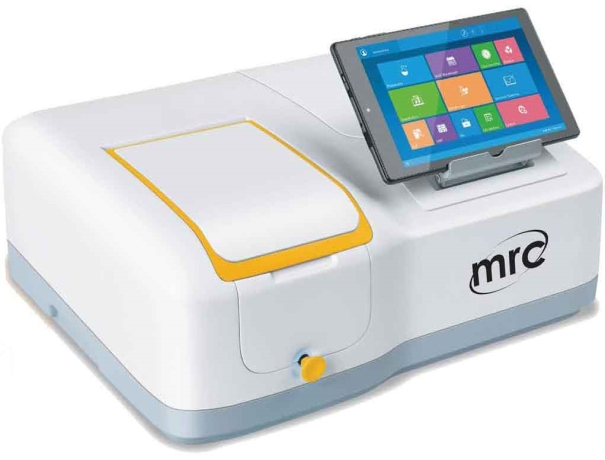At its essence, a beam spectrophotometer is a sophisticated instrument designed to measure the intensity of light absorbed or transmitted by a substance as a function of the wavelength. This fundamental principle finds applications in diverse fields, ranging from environmental science to materials research.
Importance in Scientific Research
In the vast landscape of scientific research, beam spectrophotometers serve as indispensable tools. Researchers and scientists rely on these instruments to obtain crucial data about the composition of substances, allowing for groundbreaking discoveries and advancements.
Principles of Spectrophotometry
The working principle of beam spectrophotometers revolves around the interaction of light with matter. When light passes through a sample, certain wavelengths are absorbed, and the remaining light is transmitted. The spectrophotometer detects these changes, providing valuable insights into the composition of the material.

Components of Beam Spectrophotometers
A typical beam spectrophotometer comprises several key components, including a light source, monochromator, sample holder, and a detector. Each component plays a crucial role in ensuring the accuracy and precision of the analysis.
UV-Visible Spectrophotometers
One of the most common types, UV-Visible spectrophotometers, is widely used in biochemical and environmental analyses. They cover a broad range of wavelengths, making them versatile instruments in laboratories.
Applications in Various Industries
Pharmaceuticals
In pharmaceutical research and development, beam spectrophotometers contribute to drug formulation, ensuring the precise measurement of drug concentrations and quality control.
Environmental Science
Environmental scientists employ beam spectrophotometers to analyze pollutants, study water quality, and monitor environmental changes with unparalleled accuracy.
Chemistry and Biochemistry
In the realm of chemistry and biochemistry, these instruments aid in elucidating molecular structures, studying reaction kinetics, and advancing our understanding of complex biological processes.
Advantages of Beam Spectrophotometers
High Sensitivity
Beam spectrophotometers boast high sensitivity, allowing researchers to detect minute changes in sample composition. This attribute is particularly crucial in fields where precision is paramount.
Accuracy and Precision
The accuracy and precision offered by these instruments make them invaluable in research settings. Scientists can trust the results obtained, facilitating robust data analysis and interpretation.
Speed of Analysis
Compared to traditional methods, beam spectrophotometers provide rapid results, accelerating the pace of scientific inquiry. This speed is especially beneficial in time-sensitive experiments and analyses.
Key Features to Look for in a Beam Spectrophotometer
Wavelength Range
The optimal wavelength range depends on the intended applications. Choosing a spectrophotometer with a customizable range ensures versatility in experimentation.
Resolution
High resolution is crucial for distinguishing closely spaced absorption bands, providing a more detailed analysis of complex samples.
Software Capabilities
Evaluate the software accompanying the spectrophotometer, as advanced features can simplify data analysis and enhance overall usability.
Choosing the Right Beam Spectrophotometer for Your Needs
Consideration Factors
Consider factors such as the intended applications, budget constraints, and the level of automation required when selecting a beam spectrophotometer.
Budgetary Constraints
While cutting-edge features are enticing, it's essential to align the instrument's capabilities with your budgetary constraints. Many reliable spectrophotometers cater to a range of budgets.
How to Use Beam Spectrophotometers(General instructions)
1. Power On and Warm-Up
Before diving into analysis, ensure the spectrophotometer is powered on and allowed to warm up. This step is crucial for stabilizing the light source and ensuring consistent readings.
2. Initialize the Instrument
Most modern spectrophotometers have user-friendly interfaces. Follow the manufacturer's instructions to initialize the instrument. This may involve selecting the analysis mode, setting the wavelength range, and configuring any additional parameters.
3. Prepare the Sample
Proper sample preparation is key to accurate results. Ensure that your sample is clean, free from contaminants, and appropriately diluted if necessary. Place the sample in a cuvette, ensuring it's positioned correctly for analysis.
4. Set Wavelength and Blank Control
Choose the appropriate wavelength for your analysis. If your spectrophotometer allows for blank control (measurement of the solvent without the sample), perform this step to eliminate interference and obtain more accurate readings.
5. Insert the Cuvette
Place the cuvette containing your sample into the spectrophotometer's sample compartment. Ensure it's properly aligned, and close the lid securely to prevent ambient light from affecting the readings.
6. Record the Absorbance or Transmittance
Initiate the measurement, and the spectrophotometer will display either the absorbance or transmittance values. Record these values for further analysis.
7. Calibration Checks
Regular calibration checks are essential for maintaining accuracy. Follow the instrument's calibration procedures using standard reference materials. This step ensures that the spectrophotometer is providing reliable measurements.
8. Data Analysis
Depending on your research goals, you may need to analyze the data further. Some spectrophotometers come with built-in software for basic analysis. For more advanced analyses, export the data to dedicated analysis software.
Tips for Efficient Spectrophotometer Use:
- Regular Maintenance: Schedule routine maintenance tasks, including cleaning optical components and verifying light sources, to ensure optimal performance.
- Reference Standards: Use certified reference standards to validate the accuracy of your spectrophotometer.
- Good Laboratory Practices: Adhere to good laboratory practices to minimize contamination and ensure the integrity of your results.
- Quality Solvents: Use high-quality solvents to prepare your samples, as the purity of the solvent can significantly impact results.